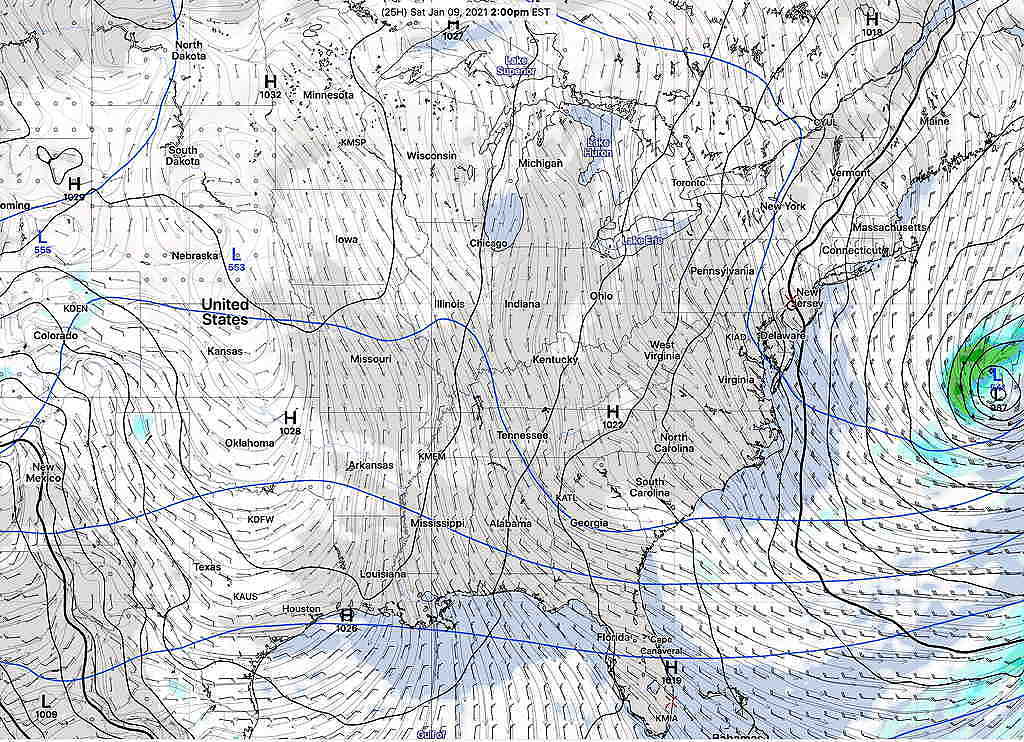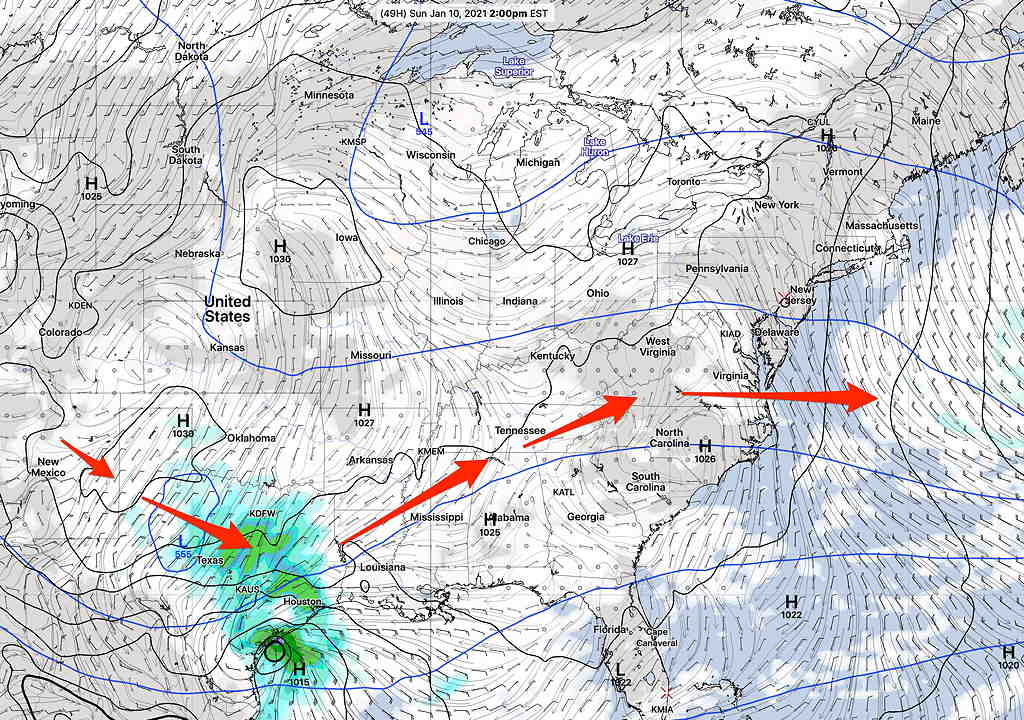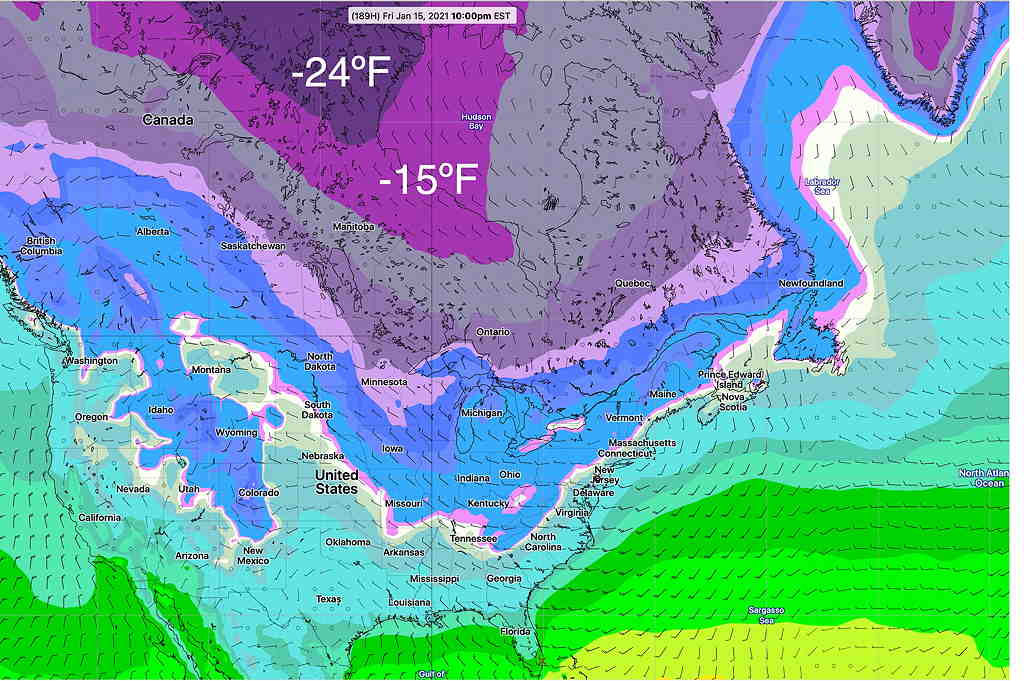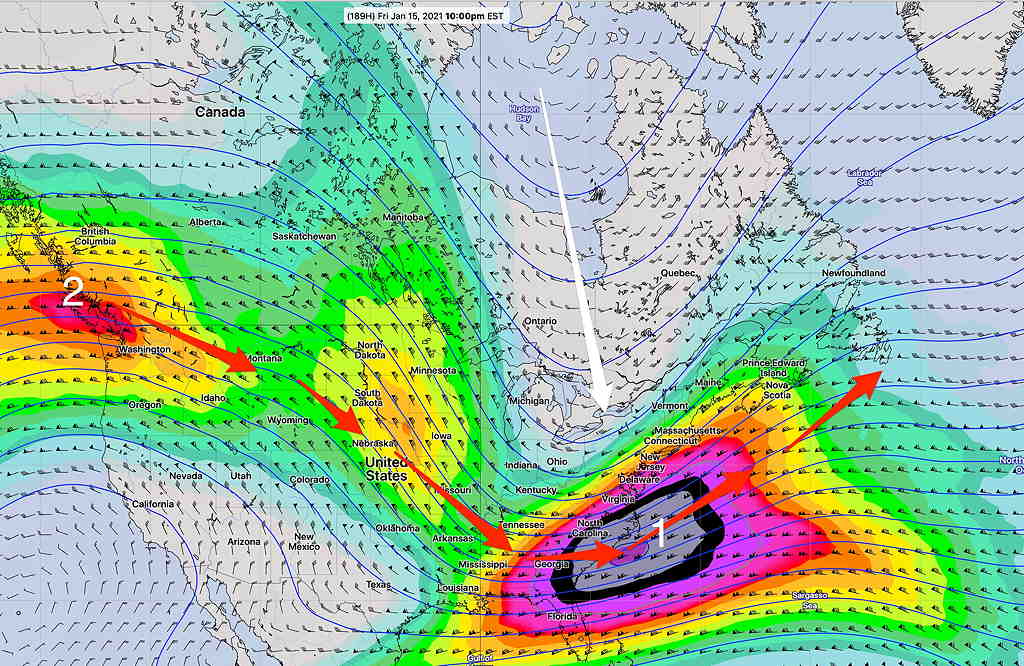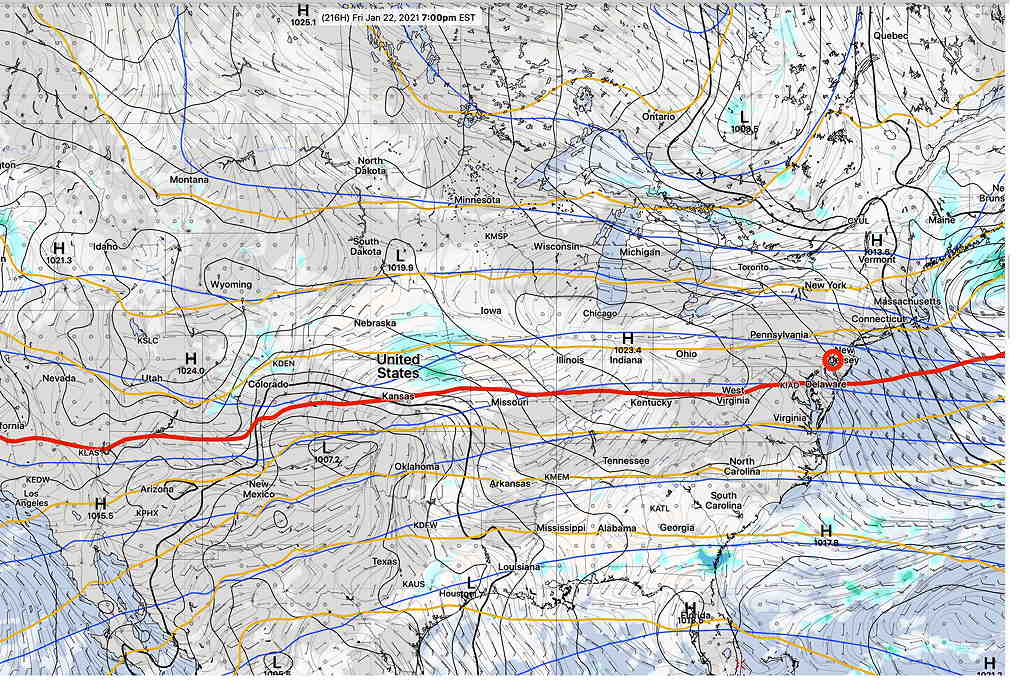
We’ll have a dip in the jet this weekend with an upper low affecting our area, but the original expectation for a continued amplified pattern next week has faded. As for the very cold weather, temperatures in Canada have significantly chilled, but there’s no indication at this time that it will move down to affect our area.
Addendum: Here’s the current day temperature deviation compared to the period 1979-2000—
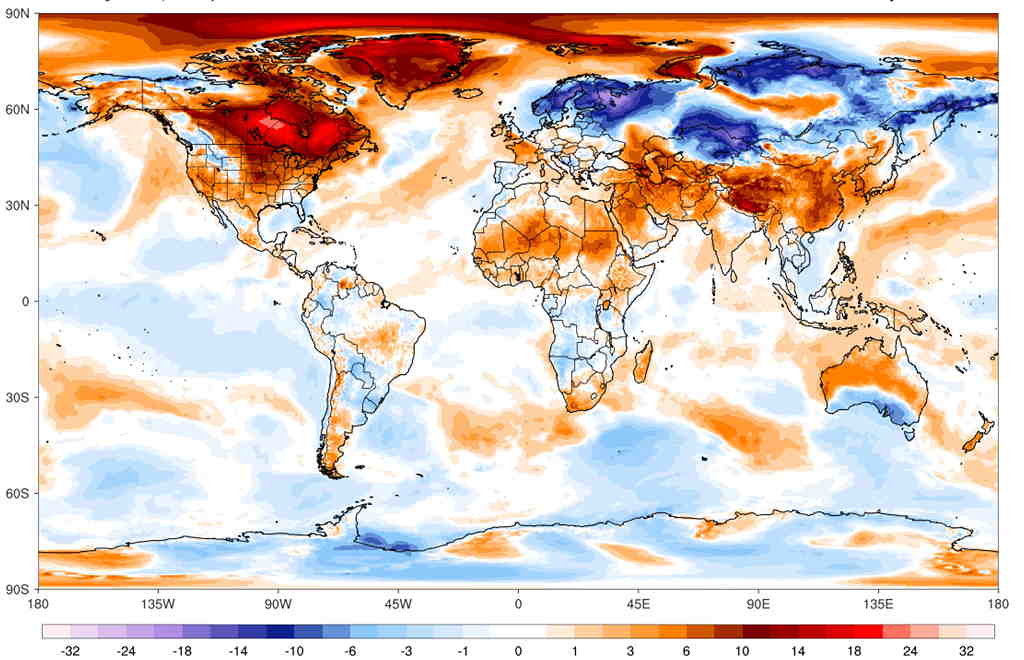
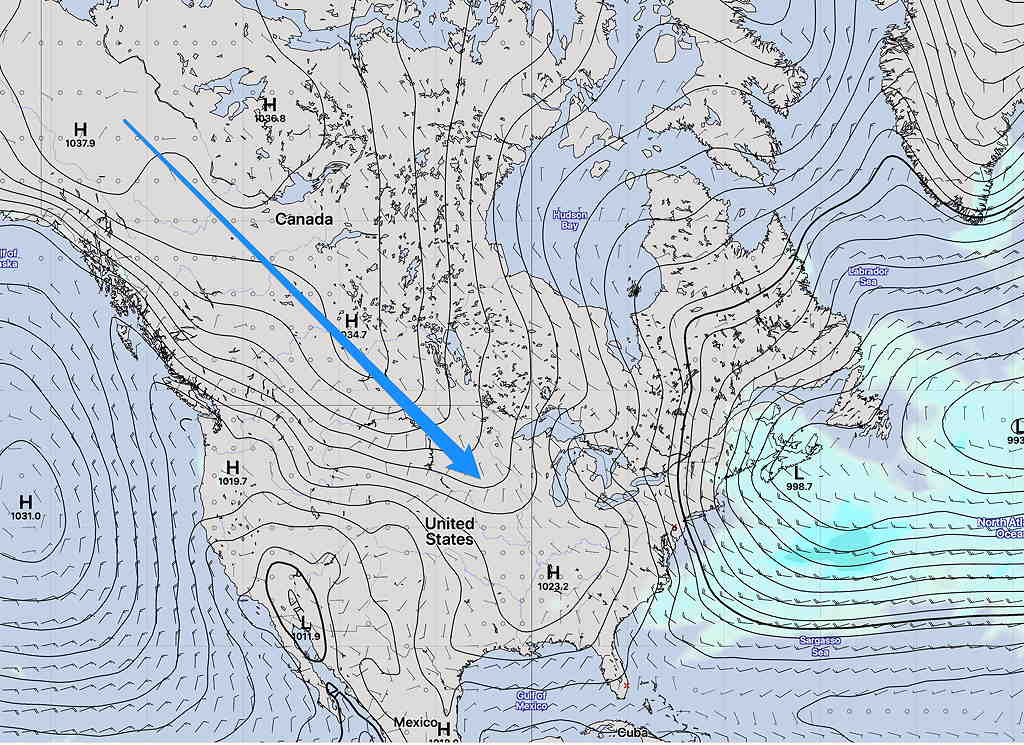
Despite talk about displacement of the”the polar vortex” as suggested by signs of “stratospheric warming”, current statistical models have deep cold in Canada, but not deep or cold enough to extend into the US at this time. Current minimum temperatures from the statistical ensemble model (GEFS)—
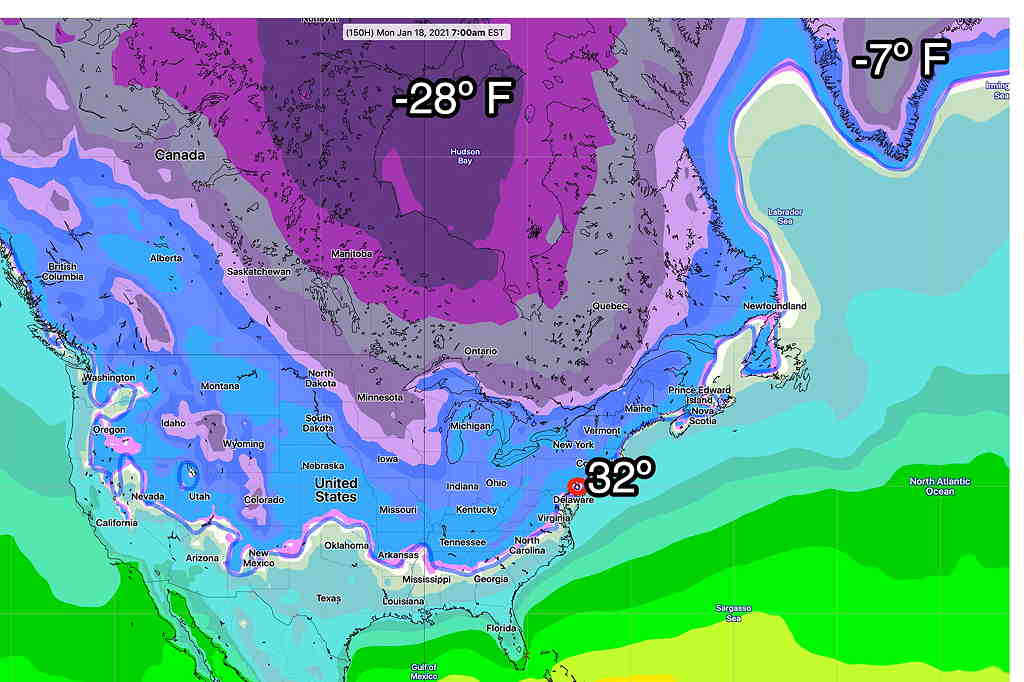
This morning’s models are beginning to show an outbreak of very cold air around the last week of January.
This winter has been relatively quiet with average to above average temperatures, and with the exception of one storm, not much snow.
As mentioned in several posts over recent days, the models having been showing a strong signal towards a pattern change during the period January 16th through January 20th.
Colder air has been building in Canada and it appears that a southward plunge in this cold air will start occurring during the above timeframe, forcing a dip in the jet stream as a jet streak (1) causes the development of low pressure—
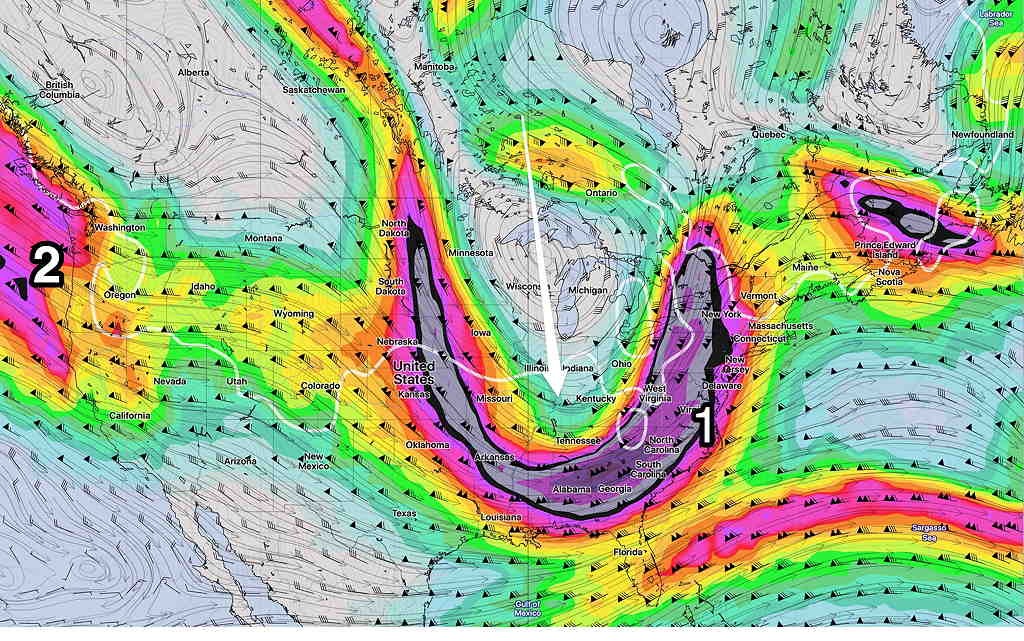
The models have not come together with exact timing and placement of this plunge. The GFS (version 16) has rain, changing to snow for this first impulse: not a big storm.
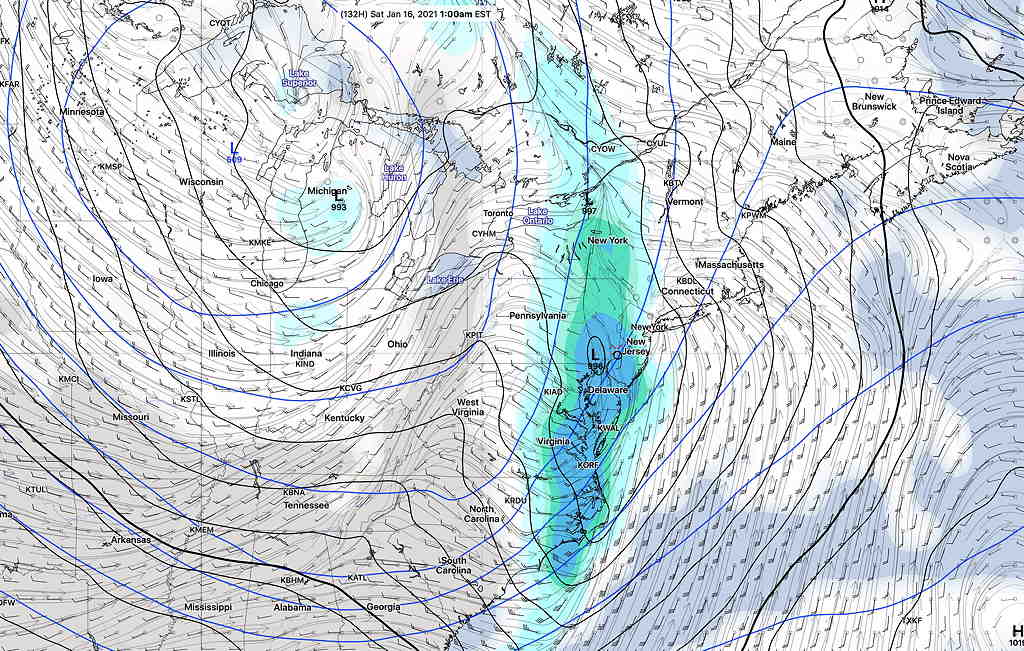
The Canadian global model is similar to the GFS 16, with snow developing Saturday morning.
I should add that the current, operational GFS (version 15.2) is faster and does NOT have this storm form until the impulse is north of us—
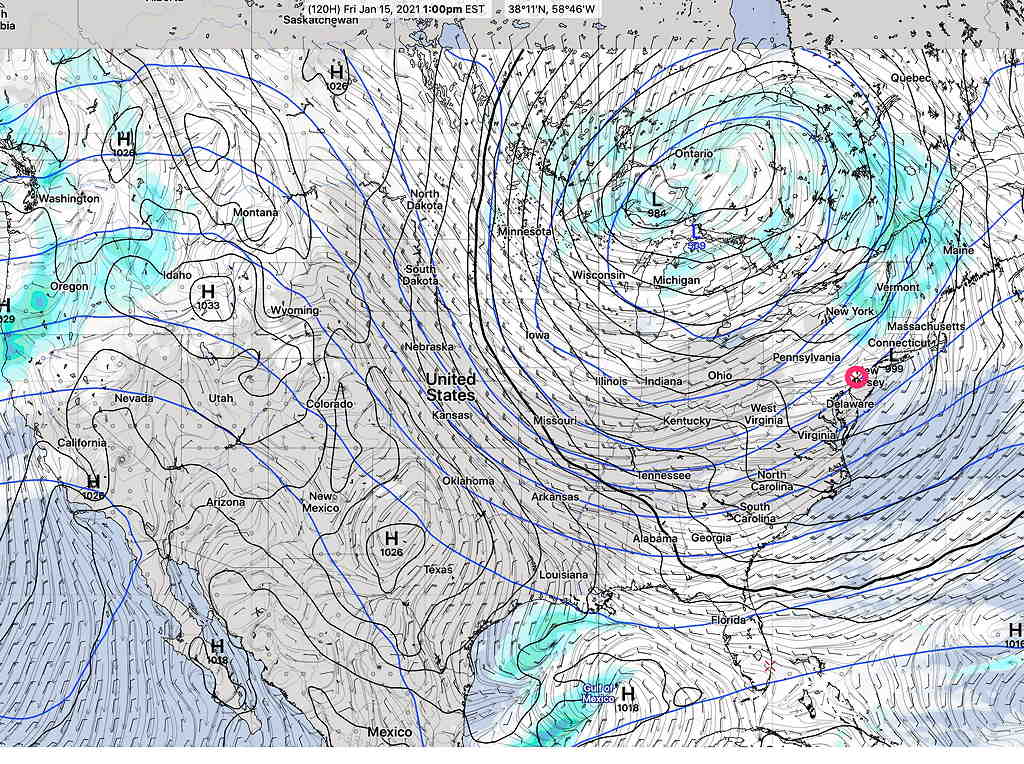
Either way, colder temperatures are expected next weekend.
On the horizon is another impulse (#2 above), which depending upon the model, shows the possibility of a significant nor’easter a few days later.
It’s way too early to really know specifics, but the take-away is that colder temperatures are on the way next weekend and a more active winter weather pattern likely follows.

